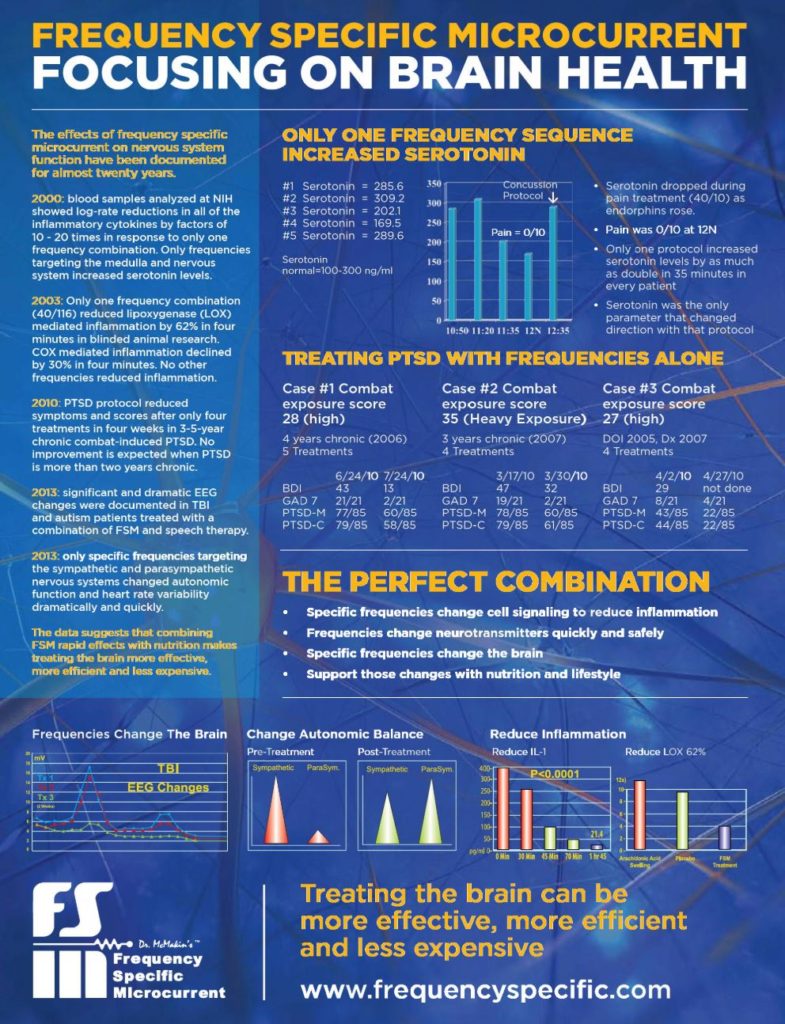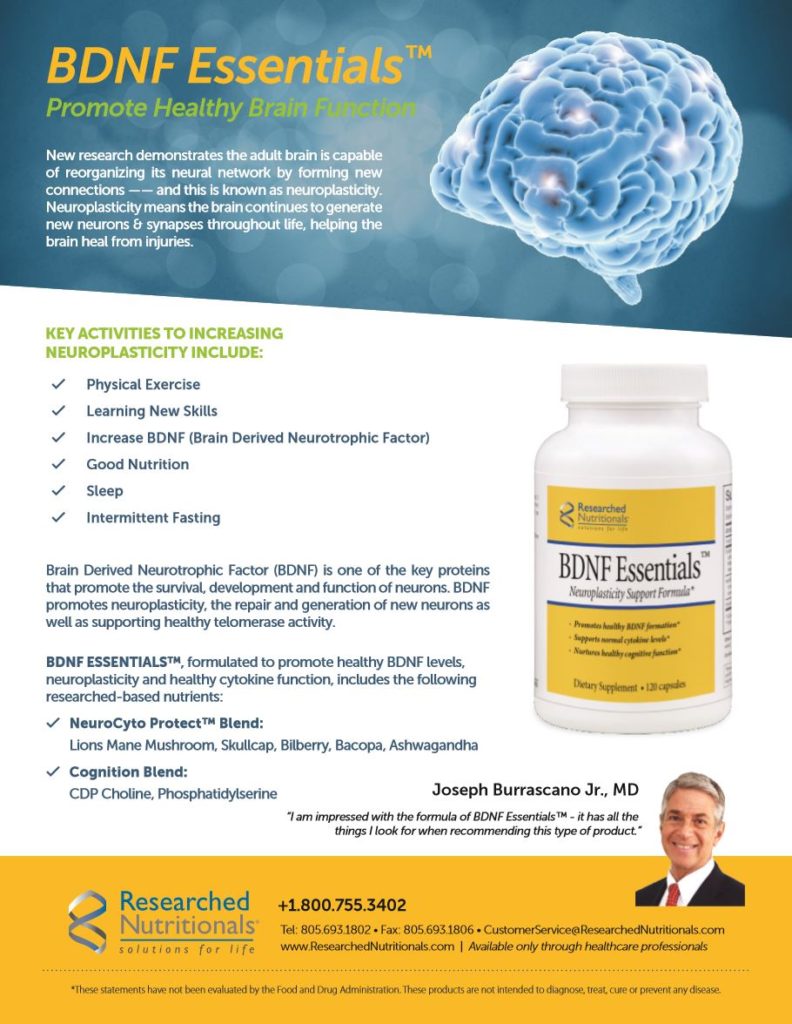By Carolyn McMakin, MA, DC
The brain is a neuro-chemical, neuro-endocrine, neuro-electrical network that regulates cognition, emotion, and physiology. Every body process depends on neuro-endocrine regulation and all neurological processes depend on supplies of nutritional elements and neuroendocrine feedback that comes from the body. The system is a completely interdependent neuro-chemical-immune-electrical network.
The effects of frequency specific microcurrent (FSM) signaling on nervous system function have been documented for almost twenty years. The data needs much more research to flesh out mechanisms and confirm the results, but at this point the very specific effects of specific frequencies on the nervous system cannot be ignored or dismissed.
FSM and Inflammation
In 2000, blood sample data was analyzed by the premier micro-immuno-chemist at NIH, Terry Phillips, PhD, who documented log-rate reductions in all of the inflammatory cytokines by factors of 10 and 20 times in response to one and only one frequency combination, 40 hertz to reduce inflammation and 10 hertz to target the spinal cord. These changes happened only in patients with fibromyalgia from spine trauma, and their pain decreased from 7.4/10 to 1.4/10 in 60 minutes. While the cytokines dropped and endorphins increased at log rates, serotonin dropped. When the pain was zero, the frequencies were changed to target the medulla and balance the nervous system. In every case, serotonin reduction stopped, and the levels of serotonin increased only in response to this protocol. In one case, the level more than doubled in 30 minutes. No nutritional intervention was used.
In 2003, blinded animal research showed that only one frequency com-bination (40/116) reduced lipoxygenase (LOX) mediated inflammation by 62% in four minutes in every animal tested. This is a time dependent response in a well-established animal model of inflammation. In the same research, 40 hertz combined with 116 hertz reduced COX mediated inflammation by 30% in four minutes, which was equivalent to injectable Toridol when it was tested in the same animal model. No other frequencies reduced inflammation.
FSM and PTSD
In 2005, the two-hour frequency protocol for treatment of PTSD was developed. The frequencies aim to reduce the activity of midbrain stress centers, reduce inflammation in the forebrain, and quiet the sympathetics. The protocol has been used by thousands of FSM practitioners for 14 years. There have been no failures to date and no negative side effects as long as medication is reduced when symptoms improve. In 2010, data collected on three-to-five-year chronic, combat-induced PTSD showed dramatic and rapid reduction in PTSD symptoms and scores after only four treatments in four weeks. No improvement is expected in PTSD when it has persisted for longer than two years. The recommended treatment calls for eight sessions in seven weeks. The data show significant improvement after only half the recommended treatment. No nutritional or medication interventions were used.
FSM and Brain Injury
The treatment protocols for traumatic brain injury, stroke, and concussion have been in use since 1997. In 2013, Alicia Thomas, EdD, documented significant and dramatic EEG changes in TBI and autism patients treated with a combination of frequency specific microcurrent and speech therapy processes. Experience has shown that when these protocols are combined with nutritional support and brain exercises, the effects are even more dramatic and positive.
FSM and Autonomic Function
In 2013, Roger Billica, MD, documented rapid dramatic changes in autonomic function and heart rate variability in response to only very specific frequencies targeting the sympathetic and parasympathetic nervous system. The frequency to “increase secretions” of the sympathetic nervous system was applied for 60 seconds and dramatically increased sympathetic tone and reduced parasympathetic tone as demonstrated by HRV readings. That effect was reversed when the frequency to “increase secretions” in the parasympathetic system was applied for 60 seconds and tested after a two-minute wait. Clinical responses consistently reproduce these effects. For this testing no nutritional intervention was used. In clinical settings, nutritional and dietary support are always recommended.
Conclusion
Nutritional approaches to brain health are clearly effective, but they take too long and, in general, work too slowly to optimize patient compliance. The data and common sense suggest that combining the rapid response to frequency specific microcurrent therapy with nutritional approaches that maintain those immediate changes would make treatment more effective, more efficient, and less expensive.







